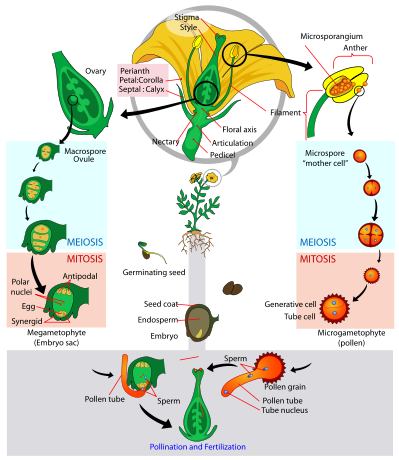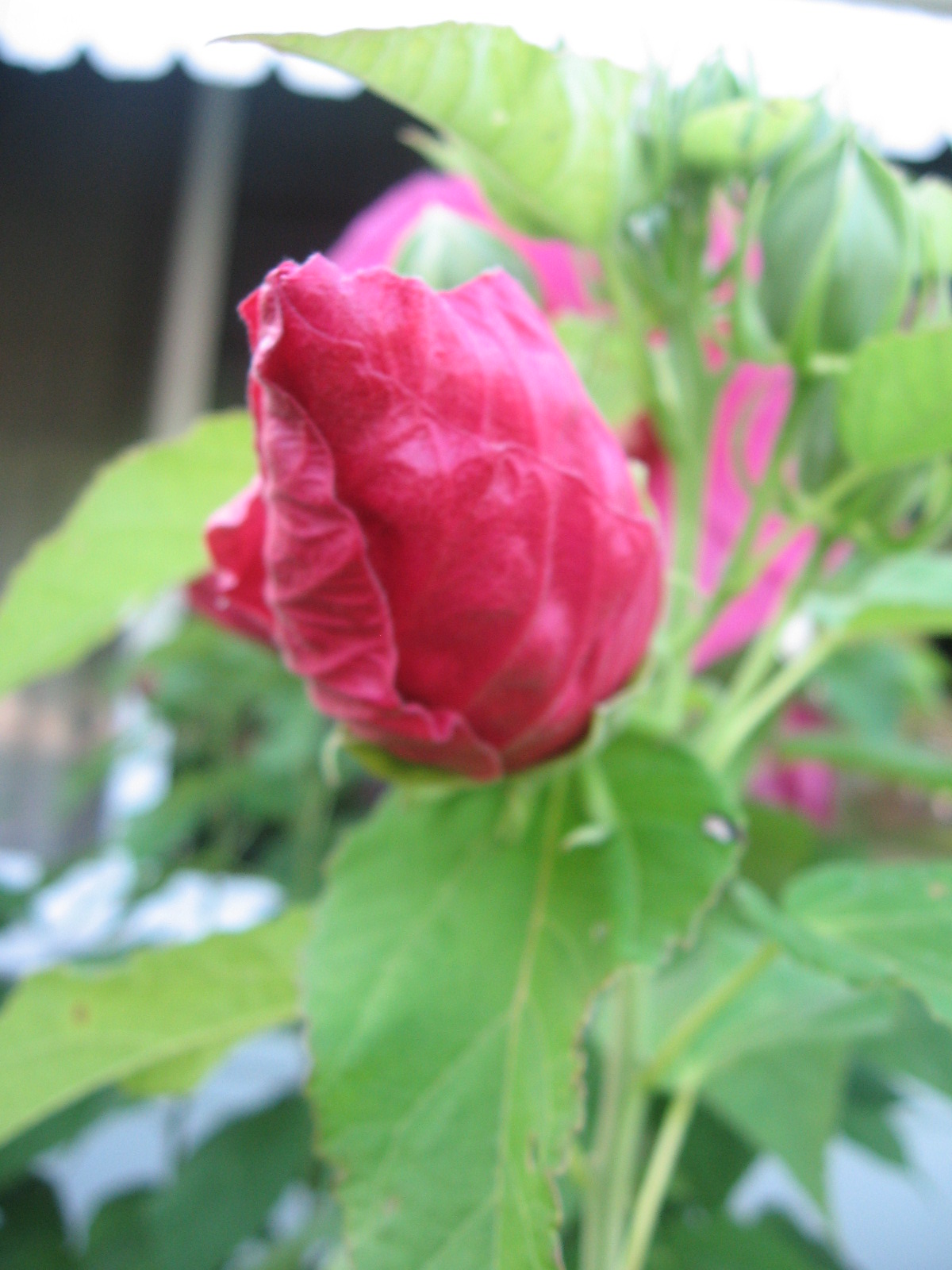ReproductionReproduction
The Hibiscus rosa-sinensis, like all angiosperms is
sporophyte dominant, meaning that the multicellular diploid is
the most prevalent. The life cycle for the Hibiscus rosa-
sinensis follows the alternation of generations. Which means the
sporophyte undergoes meiosis to produce haploid cells.
 The
haploid cell then develops into a multicellular haploid, which
is called the gametophyte. The gametophyte then undergoes
mitosis to produce gametes. One of the gametes is then
fertilized and forms a zygote. The zygote undergoes mitosis to
produce what we see as the flower or the sporophyte portion of
the plant.
The
haploid cell then develops into a multicellular haploid, which
is called the gametophyte. The gametophyte then undergoes
mitosis to produce gametes. One of the gametes is then
fertilized and forms a zygote. The zygote undergoes mitosis to
produce what we see as the flower or the sporophyte portion of
the plant.
The
Hibiscus rosa- sinensis is a bisexual plant, meaning
that the plant contains both male and female reproductive
anatomy. The male reproductive structure is referred to as the
stamen and the female reproductive structure is referred to as
the ovary.
If a part of the stamen is removed as well as the
petals of the flower, the flower cannot take part in any form of
genetic crosses with other species of the
 Hibiscus rosa-
sinensis. The pollen on the Hibiscus rosa- sinensis
has a
high fertility rate of over 60%. The stalks of the Hibiscus rosa- sinensis only contain one flower. The
Hibiscus rosa-sinensis is also heterosporous, meaning that the plant
contains microspores and megaspores that are produced via
meiosis. The microspores make male gametophytes and the
megaspores make female gametophytes.
Hibiscus rosa-
sinensis. The pollen on the Hibiscus rosa- sinensis
has a
high fertility rate of over 60%. The stalks of the Hibiscus rosa- sinensis only contain one flower. The
Hibiscus rosa-sinensis is also heterosporous, meaning that the plant
contains microspores and megaspores that are produced via
meiosis. The microspores make male gametophytes and the
megaspores make female gametophytes.
The Hibiscus rosa-sinensis is an angiosperm meaning that it has a seed covering. The seed covering on this plant tends to be dry and hard. When the plant produces fruit it tends to be in an oval shape. The flowers tend to be 4 to 8 inches and the plant flowers year around when it is in the right habitat.
The Hibiscus rosa-sinensis requires frequent watering and a lot of fertilizer when it is first planted. The Hibiscus rosa- sinensis also requires full to partial sun.
To go to interactions click here!
To go back home click here!